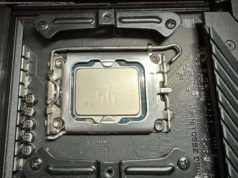We’ve roundup some of the best specialized distro to help you find the best one for the job.
Linux distros come in all shapes and sizes. Literally. From miniscule ones that weigh in at just over 100 MB and can be lugged around in USB disks to 4GB behemoths that work best when installed on SSDs. In addition to the top distros that are designed to appeal to a wide number of users and can be tailored as per individual requirements, there are a whole lot of specialized distros that are built for a particular purpose. Migrating from Windows? There’s a distro that’ll ease the transition. A Windows update messed up your boot loader? There’s a distro that’ll help you fix it in a jiffy. Want to resurrect an old computer? Need to tie disks into a NAS? Want to run a firewall that’ll shield your entire network? Are you setting up a small home office? No matter what your requirement, the diverse open source community has a distro for you. In this guide we’ll look at some of the best ones that have been put together for specific tasks. If you are just taking your first steps in Linux, you should begin your journey with Nitrux. The distro leverages on some of the most stable and well-respected open source projects such as Ubuntu and the KDE Plasma desktop and builds on them to create a distro that suits the sensibilities of new Linux users. For instance, instead of building a custom desktop environment from scratch, Nitrux relies on KDE Plasma’s famed malleability along with some redesigned components to simplify the workflow for new users. It offers a couple of layouts for the desktop to allow users to make best use of the available screen real estate. Nitrux has even customized some administration apps to make tasks such as firewall and backup approachable for inexperienced users. It ships with a healthy dose of apps for all kinds of desktop tasks. The distro also supports and encourages the use of AppImages, which makes it straightforward to install additional apps. In fact, Nitrux plans to switch all its graphical apps to AppImages eventually. All the AppImages are launched in a firejail sandbox, which makes Nitrux more secure out of the box than your typical desktop Linux. The distro has an active community that you can interact with on all the popular social networks. However, the lack of a dedicated documentation section is a downer. Nitrux is available for 64-bit computers only, but can also boot on older machines with the Legacy BIOS in addition to the newer EFI machines. The Zorin OS project began in 2008 with the sole intention of making Linux user-friendly. Its developers wanted to make Linux accessible to regular users and they did this by introducing familiarity in the user interface. The distro pitches itself to first-time Linux users that are used to the ways of popular proprietary operating systems, namely Windows and macOS. It does so thanks to its custom Zorin Appearance app that tweaks Zorin’s Gnome desktop environment to make it resemble Windows in both form and function. Zorin is available in multiple different editions. Three of these, namely Core, Lite, and Education, are offered as free downloads. Zorin is based on Ubuntu and the Core edition is the standard version that includes all the apps you’ll need in a regular desktop. If you have an older computer, you can use the Lite edition that is designed for underpowered machines. The Education edition is, as its name suggests, designed for learning and ships with all the popular open source educational apps and utilities. Besides these three there is a fourth version called the Ultimate edition, which is currently available for $39. It includes support as well as a few extra features, such as the option of using interfaces that mimic macOS and is chock-full of all kinds of apps and games. Pop!_OS is developed and maintained by hardware vendor System76, and besides being shipped on its own hardware is also available as a free download. The distro has several interesting features, which make it an interesting option, especially for gamers. The distro is based on the Ubuntu LTS release and sports its own user interface over Gnome, called Pop Shell. While there are several other gaming distros for Linux, what makes Pop!_OS unique is that it ships with all the necessary plumbing for gamers. For instance, its developers ensure that hybrid graphics work flawlessly on the platform. If you have a hybrid graphics card, the distro will give you the option to launch games on the GPU in the context menu. You’ll also be able to easily toggle between battery-saving and high-powered graphics. There are a couple of editions of Pop!_OS. Besides the standard edition, there is one that is designed specifically for users with Nvidia hardware and ships with the proprietary driver for the hardware. Pop!_OS also encrypts your installation by default and while it ships with minimal apps, you can flesh your installation using its custom intuitive app store called Pop!_Shop, which in addition to the regular desktop apps also includes the likes of Steam, Lutris, and GameHub. Kodachi is designed for anyone who cares about their privacy and needs a secure, anti-forensic, and anonymous distro. The latest edition of the distro is based on Xubuntu 18.04.5 and uses a customized Xfce desktop. Kodachi equips with all kinds of security-centric and privacy-enhancing apps along with a whole lot of regular apps to enable you to use the distro as your daily driver.






